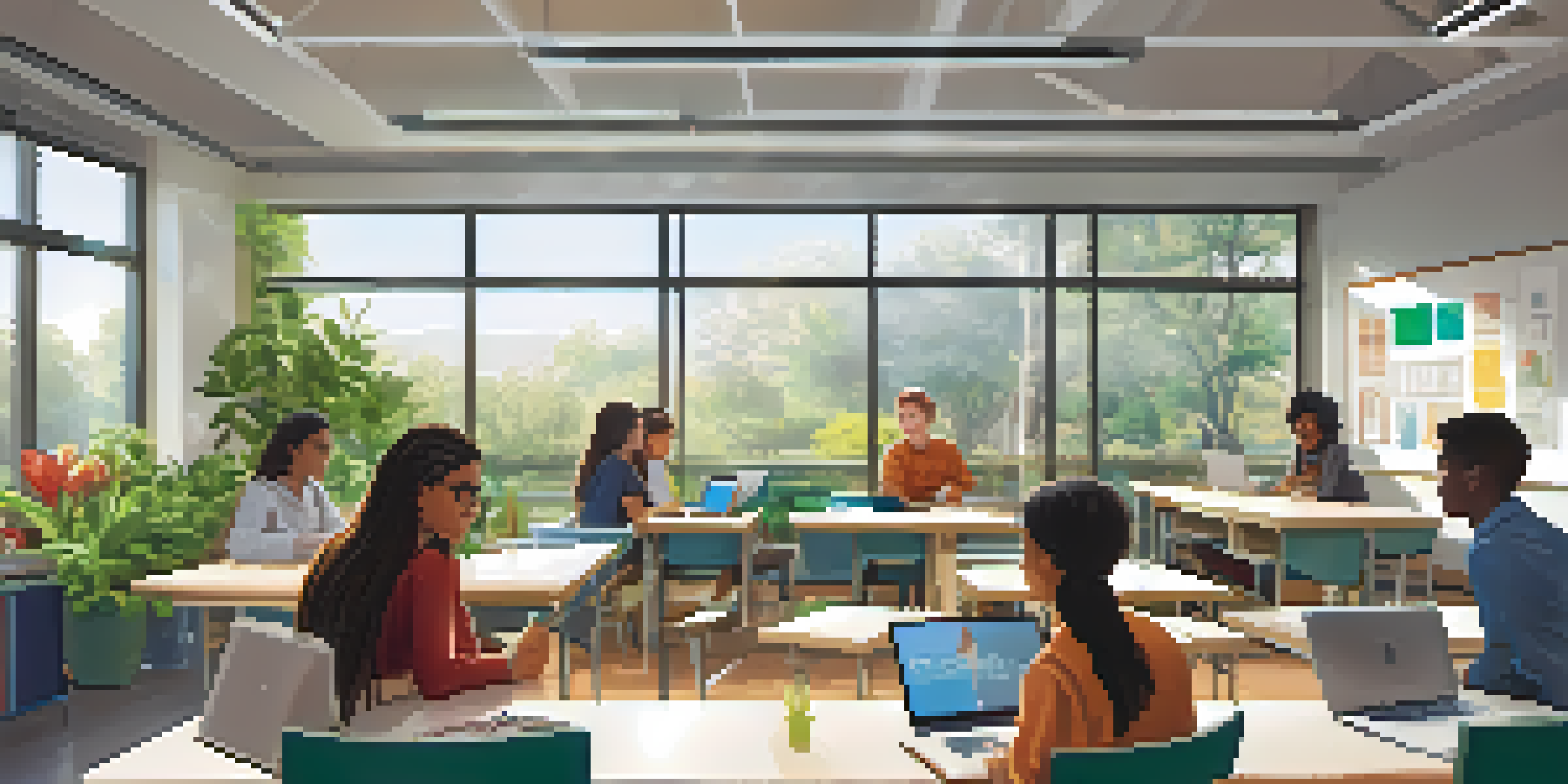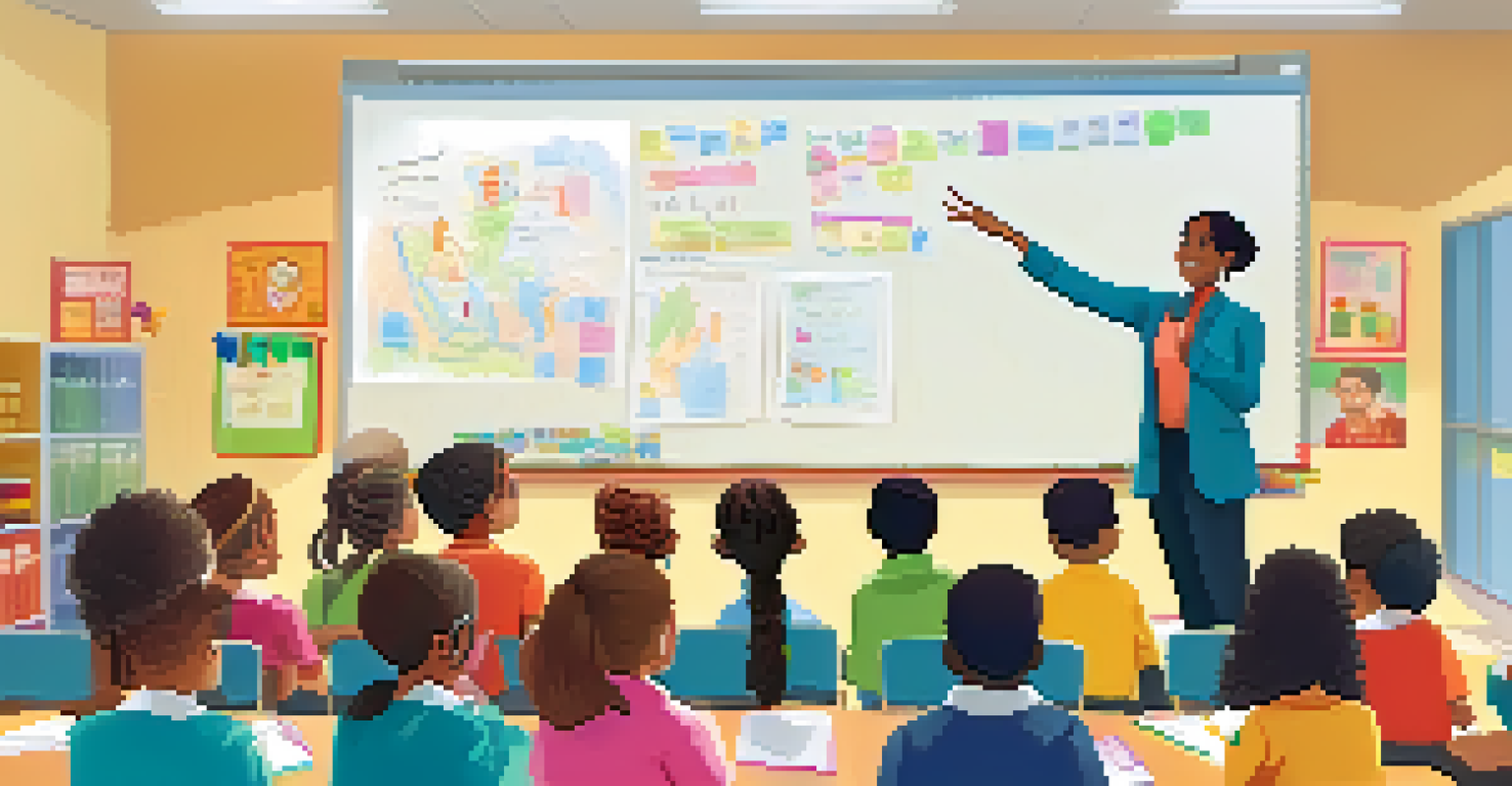The Benefits of Flipped Classrooms in Online Education

Understanding the Flipped Classroom Model
The flipped classroom model flips traditional learning on its head. Instead of introducing new material in class, students first engage with content at home, usually through videos or readings. This allows classroom time to be dedicated to discussions, problem-solving, and collaborative activities, making learning more interactive and engaging.
Education is not the filling of a pail, but the lighting of a fire.
One of the key advantages of this model is the flexibility it provides. Students can learn at their own pace, pausing and revisiting content as needed. This self-directed approach can lead to deeper understanding, as learners have the opportunity to digest information more thoroughly before applying it in a group setting.
Moreover, this model encourages a shift from passive to active learning. By spending class time on application, students can clarify misconceptions and deepen their knowledge through collaboration, making the overall learning experience more enriching.
Increased Student Engagement and Participation
Flipped classrooms have been shown to significantly boost student engagement. When learners come to class prepared, they are more likely to participate in discussions and contribute to group work. This active involvement not only enhances their understanding but also fosters a sense of community among peers.

Additionally, the interactive nature of flipped classrooms can cater to diverse learning styles. Some students may thrive in hands-on activities, while others may excel in discussions or presentations. By accommodating various preferences, educators can create a more inclusive learning environment.
Flexibility in Learning Pace
The flipped classroom model allows students to engage with content at their own pace, enhancing their understanding and retention.
As students become more engaged, their motivation to learn tends to increase. This heightened interest can lead to improved academic performance, as learners feel more connected to the material and their classmates.
Enhanced Opportunities for Collaboration
One of the standout features of flipped classrooms is the emphasis on collaboration. In traditional settings, class time is often limited to lecturing, leaving little room for group work. However, with the flipped model, students can collaborate on projects or problem-solving exercises during class, enhancing their teamwork skills.
Tell me and I forget. Teach me and I remember. Involve me and I learn.
Collaborative learning also promotes critical thinking. When students work together, they challenge each other's ideas and perspectives, leading to richer discussions. This social interaction not only deepens their understanding of the material but also prepares them for real-world situations where teamwork is essential.
Furthermore, educators can facilitate peer-to-peer learning, allowing students to explain concepts to one another. This not only reinforces their own understanding but also builds communication skills that are valuable in any career.
Personalized Learning Experiences
Flipped classrooms allow for a more personalized learning journey. Since students engage with content at their own pace, they have the opportunity to spend extra time on challenging topics. This tailored approach can help address individual learning needs, ensuring no one gets left behind.
Teachers can further enhance this personalization by using data from student interactions with online materials. By tracking progress and understanding, educators can identify areas where students may be struggling and provide targeted support.
Boosted Engagement and Collaboration
Flipped classrooms significantly increase student engagement by encouraging active participation and collaborative learning during class time.
Additionally, personalized learning fosters a sense of ownership over the educational process. When students take control of their learning, they are more likely to develop intrinsic motivation, leading to a lifelong love for learning.
Improved Time Management Skills
Participating in a flipped classroom can help students develop essential time management skills. By requiring them to prepare before class, learners must plan their schedules effectively to balance multiple responsibilities. This practice can be invaluable in preparing them for future academic and professional challenges.
As students take charge of their learning, they learn to prioritize tasks and set deadlines for themselves. This proactive approach encourages them to become more organized and responsible, traits that are crucial in any career.
Moreover, managing their time effectively can reduce stress and improve overall well-being. Students who feel in control of their learning are often more confident and capable of facing challenges head-on.
Fostering a Growth Mindset
The flipped classroom model encourages a growth mindset, where students believe that their abilities can improve through effort and perseverance. By engaging with challenging content before class, students learn that making mistakes is part of the learning process, which can lead to resilience.
In a supportive classroom environment, learners can share their struggles and successes, reinforcing the idea that growth comes from collaboration and persistence. This communal experience can help students feel more comfortable taking risks in their learning.
Personalized Learning Opportunities
This model fosters personalized learning experiences, enabling students to focus on their individual needs and interests while taking ownership of their education.
Ultimately, fostering a growth mindset equips students with the tools they need to tackle future challenges. When they embrace the idea that they can improve, they become more adaptable and open to new experiences.
Challenges and Considerations for Implementation
While the benefits of flipped classrooms are compelling, there are challenges to consider when implementing this model. For instance, not all students may have equal access to technology or reliable internet, which can create disparities in learning opportunities.
Educators must also be mindful of the initial transition period. Shifting from a traditional teaching approach to a flipped model requires careful planning and support. Teachers may need training to effectively design and facilitate engaging classroom activities that complement the online content.

Finally, ongoing assessment and feedback are crucial. Educators should regularly evaluate the effectiveness of the flipped classroom model and make adjustments based on student feedback and learning outcomes to ensure continuous improvement.
Conclusion: The Future of Online Education
The flipped classroom model represents a significant shift in online education, emphasizing engagement, collaboration, and personalized learning. As educators and institutions embrace this approach, we may see a more dynamic and effective learning environment emerge.
By leveraging technology and innovative teaching strategies, the flipped classroom fosters skills that are essential in today's fast-paced world. Students are not just passive recipients of information; they become active participants in their learning journey.
As we look to the future, the potential for flipped classrooms in online education is promising. With continued adaptation and support, this model could transform the educational landscape, making learning more accessible, enjoyable, and effective for all.